(Page créée avec « Cut a piece of metal sheet, same shape of the pipe, you can mark it before cutting. . Weld it at the bottom of your stove, same side of your opening. ») |
(update property name) |
||
| (33 révisions intermédiaires par 3 utilisateurs non affichées) | |||
| Ligne 1 : | Ligne 1 : | ||
| − | {{ | + | {{Tuto Details |
|Main_Picture=Tent_heating_stove_1.png | |Main_Picture=Tent_heating_stove_1.png | ||
|Licences=Attribution (CC BY) | |Licences=Attribution (CC BY) | ||
| Ligne 15 : | Ligne 15 : | ||
|IsTranslation=1 | |IsTranslation=1 | ||
}} | }} | ||
| − | {{ | + | {{Introduction |
|Introduction=On Lesbos Island, Greece, refugees from around the world are working with local Greeks to transform waste metal into stoves for cooking and heating, and giving these stoves to those families who have no access to heating. With temperatures quickly dropping to below 0 Celsius, our goal is to make one stove for every family before the end of December! We are not an NGO, but a collective of people who believe the world is one family, and that small, committed group of people can make a change. | |Introduction=On Lesbos Island, Greece, refugees from around the world are working with local Greeks to transform waste metal into stoves for cooking and heating, and giving these stoves to those families who have no access to heating. With temperatures quickly dropping to below 0 Celsius, our goal is to make one stove for every family before the end of December! We are not an NGO, but a collective of people who believe the world is one family, and that small, committed group of people can make a change. | ||
Yours in One world, one family, | Yours in One world, one family, | ||
| Ligne 22 : | Ligne 22 : | ||
Dans ce contexte, l'équipe du Vasudhaiva Ride a développé et produit en masse (300 exemplaires) ce modèle de poële à bois compact permettant de réchauffer l'atmosphère d'une tente pour des nuits plus douces. Ces poëles ont en grande partie été réalisés par des réfugiés à partir de matériaux de récupération ou de déchets. | Dans ce contexte, l'équipe du Vasudhaiva Ride a développé et produit en masse (300 exemplaires) ce modèle de poële à bois compact permettant de réchauffer l'atmosphère d'une tente pour des nuits plus douces. Ces poëles ont en grande partie été réalisés par des réfugiés à partir de matériaux de récupération ou de déchets. | ||
}} | }} | ||
| − | {{ | + | {{TutoVideo |
| − | | | + | |VideoType=Youtube |
| − | | | + | |VideoURLYoutube=https://youtu.be/5Ns0rtwJw6I |
}} | }} | ||
| − | {{ | + | {{Materials |
|Material=* A part of a metal pipe at the scrapyard (diameter 20cm / Thickness 4mm) | |Material=* A part of a metal pipe at the scrapyard (diameter 20cm / Thickness 4mm) | ||
* Metal sheet 2mm thickness | * Metal sheet 2mm thickness | ||
| Ligne 36 : | Ligne 36 : | ||
*Welding machine | *Welding machine | ||
}} | }} | ||
| − | {{ | + | {{Tuto Step |
| − | |||
| − | |||
| − | |||
| − | |||
|Step_Title=Main Body | |Step_Title=Main Body | ||
|Step_Content=Take the pipe diameter 20cm and cut it. 20Cm high. | |Step_Content=Take the pipe diameter 20cm and cut it. 20Cm high. | ||
| Ligne 47 : | Ligne 43 : | ||
Cut a piece of metal sheet, same shape of the pipe, you can mark it before cutting. . Weld it at the bottom of your stove, same side of your opening. | Cut a piece of metal sheet, same shape of the pipe, you can mark it before cutting. . Weld it at the bottom of your stove, same side of your opening. | ||
| + | |Step_Picture_00=Tent_heating_stove_2.png | ||
| + | |Step_Picture_01=Tent_heating_stove_3.png | ||
| + | |Step_Picture_02=Tent_heating_stove_4.png | ||
}} | }} | ||
| − | {{ | + | {{Tuto Step |
| + | |Step_Title=Mesh preparation | ||
| + | |Step_Content=Cut 2 pieces of wire, weld them middle height of the stove with cross shape. | ||
| + | |||
| + | Cut a circle in the metal net (10cm more than the pipe diameter), bend it down to do the exact shape of your stove to reinforce to border of the circle. | ||
| + | |||
| + | Cut at least 3 small pieces of wire and bend them through the net. You have to be in the double layer part. The end of the hook has to face up. | ||
| + | |||
| + | Put the net on the top of your cross. Net bending down, hook bending up. | ||
| + | |||
| + | Weld them | ||
|Step_Picture_00=Tent_heating_stove_5.png | |Step_Picture_00=Tent_heating_stove_5.png | ||
|Step_Picture_01=Tent_heating_stove_6.png | |Step_Picture_01=Tent_heating_stove_6.png | ||
| Ligne 55 : | Ligne 64 : | ||
|Step_Picture_04=Tent_heating_stove_9.png | |Step_Picture_04=Tent_heating_stove_9.png | ||
|Step_Picture_05=Tent_heating_stove_10.png | |Step_Picture_05=Tent_heating_stove_10.png | ||
| − | |||
| − | |||
| − | |||
| − | |||
| − | |||
| − | |||
| − | |||
| − | |||
| − | |||
| − | |||
}} | }} | ||
| − | {{ | + | {{Tuto Step |
| + | |Step_Title=Top cover | ||
| + | |Step_Content=Cut a circle in a metal sheet, same shape of your stove. This will become the cover of your stove. Fix it to your stove with an hinge. Weld the hinge at the back of your stove, opposite side of your small opening. | ||
|Step_Picture_00=Tent_heating_stove_11.png | |Step_Picture_00=Tent_heating_stove_11.png | ||
|Step_Picture_01=Tent_heating_stove_12.png | |Step_Picture_01=Tent_heating_stove_12.png | ||
| − | |||
| − | |||
}} | }} | ||
| − | {{ | + | {{Tuto Step |
| + | |Step_Title=Lock | ||
| + | |Step_Content=Create a simple system to lock your stove. One buckle on your cover, one buckle over the opening and one hook. | ||
|Step_Picture_00=Tent_heating_stove_13.png | |Step_Picture_00=Tent_heating_stove_13.png | ||
|Step_Picture_01=Tent_heating_stove_14.png | |Step_Picture_01=Tent_heating_stove_14.png | ||
| − | |||
| − | |||
}} | }} | ||
| − | {{ | + | {{Tuto Step |
| − | + | |Step_Title=Feet | |
| − | |Step_Title= | + | |Step_Content=Finally, cut 3 pieces of rebars (length 15cm) bend them a bit to have curved legs which are more stable. |
| − | |Step_Content= | ||
| − | + | Weld them 3 points equal distances. | |
| − | + | Test the stability of your stove. Move the place of the legs if necessary. | |
| + | |Step_Picture_00=Tent_heating_stove_15.png | ||
}} | }} | ||
| − | {{ | + | {{Tuto Step |
| − | |Step_Title= | + | |Step_Title=Instructions of use : |
| − | |Step_Content=1. | + | |Step_Content=1. choose a place for the stove and do a mud or small stone bed for the stove. The bed size should be twice the stove diameter and 2cm thick. This bed will avoid ashes to make something burn in your interior. |
| − | 2. | + | 2.Keep the stove outside to make fire. |
| − | 3. | + | 3. Cut small pieces of wood to not waste too much |
| − | 4. | + | 4. Burn the wood on the top of the net and use the hole as an air entrance (blow) |
| − | 5. | + | 5. Never close the stove when burning |
| − | 6. | + | 6. Wait the time when there is no smoke anymore, when all the wood has been burned |
| − | 7. | + | 7. Close the stove properly with the lock |
| − | 8. | + | 8. Bring the stove in your interior by protecting your hands with fabrics. |
| − | 9. | + | 9. Enjoy the heat |
| − | 10. | + | 10. Make sure you have air rotation in the place you heat to not suffocate |
| − | 11. | + | 11. Remove the ashes before starting a new fire |
}} | }} | ||
| − | {{ | + | {{Notes |
| − | |Notes= | + | |Notes=Ground Feedback, A good explanation of how the stove works is needed |
| + | |||
| + | - Some people let smoking fire in their tent, that has led to some intoxication from smokes. It works with the residual heat from the stove itself (which is quite heavy for it size), you should never let hot coals in it. The news that people got intoxicated spread around very quick and as a result no one is using these anymore in the olive groove. | ||
| + | |||
| + | |||
| + | |||
| + | - Some people use this stove for cooking, which is not very handy or efficient... | ||
| + | |||
| + | Project realized by the Vasudhaiva Ride team, more information on their facebook page: | ||
https://www.facebook.com/Vasudhaivaride | https://www.facebook.com/Vasudhaivaride | ||
}} | }} | ||
| − | {{ | + | {{Tuto Status |
|Complete=Published | |Complete=Published | ||
}} | }} | ||
| + | {{Separator}} | ||
Version actuelle datée du 22 octobre 2019 à 16:08
Description
Simple wood stove to heat a tent or housing
Introduction
On Lesbos Island, Greece, refugees from around the world are working with local Greeks to transform waste metal into stoves for cooking and heating, and giving these stoves to those families who have no access to heating. With temperatures quickly dropping to below 0 Celsius, our goal is to make one stove for every family before the end of December! We are not an NGO, but a collective of people who believe the world is one family, and that small, committed group of people can make a change. Yours in One world, one family,
- Ben Reid-Howells, Prashant Kumar and the team!Dans ce contexte, l'équipe du Vasudhaiva Ride a développé et produit en masse (300 exemplaires) ce modèle de poële à bois compact permettant de réchauffer l'atmosphère d'une tente pour des nuits plus douces. Ces poëles ont en grande partie été réalisés par des réfugiés à partir de matériaux de récupération ou de déchets.
Youtube
Matériaux
- A part of a metal pipe at the scrapyard (diameter 20cm / Thickness 4mm)
- Metal sheet 2mm thickness
- Metal wire 2mm diameter you can weld
- An hinge you can weld
- Some scrap bars (minimum 6mm diameter)
- Metal net
Outils
- Grinding machine
- Welding machine
Étape 1 - Main Body
Take the pipe diameter 20cm and cut it. 20Cm high.
Cut a small opening 5x5cm at the bottom of the pipe.
Cut a piece of metal sheet, same shape of the pipe, you can mark it before cutting. . Weld it at the bottom of your stove, same side of your opening.
Étape 2 - Mesh preparation
Cut 2 pieces of wire, weld them middle height of the stove with cross shape.
Cut a circle in the metal net (10cm more than the pipe diameter), bend it down to do the exact shape of your stove to reinforce to border of the circle.
Cut at least 3 small pieces of wire and bend them through the net. You have to be in the double layer part. The end of the hook has to face up.
Put the net on the top of your cross. Net bending down, hook bending up.
Weld them
Étape 3 - Top cover
Cut a circle in a metal sheet, same shape of your stove. This will become the cover of your stove. Fix it to your stove with an hinge. Weld the hinge at the back of your stove, opposite side of your small opening.
Étape 4 - Lock
Create a simple system to lock your stove. One buckle on your cover, one buckle over the opening and one hook.
Étape 5 - Feet
Finally, cut 3 pieces of rebars (length 15cm) bend them a bit to have curved legs which are more stable.
Weld them 3 points equal distances.
Test the stability of your stove. Move the place of the legs if necessary.
Étape 6 - Instructions of use :
1. choose a place for the stove and do a mud or small stone bed for the stove. The bed size should be twice the stove diameter and 2cm thick. This bed will avoid ashes to make something burn in your interior.
2.Keep the stove outside to make fire.
3. Cut small pieces of wood to not waste too much
4. Burn the wood on the top of the net and use the hole as an air entrance (blow)
5. Never close the stove when burning
6. Wait the time when there is no smoke anymore, when all the wood has been burned
7. Close the stove properly with the lock
8. Bring the stove in your interior by protecting your hands with fabrics.
9. Enjoy the heat
10. Make sure you have air rotation in the place you heat to not suffocate
11. Remove the ashes before starting a new fire
Notes et références
Ground Feedback, A good explanation of how the stove works is needed
- Some people let smoking fire in their tent, that has led to some intoxication from smokes. It works with the residual heat from the stove itself (which is quite heavy for it size), you should never let hot coals in it. The news that people got intoxicated spread around very quick and as a result no one is using these anymore in the olive groove.
- Some people use this stove for cooking, which is not very handy or efficient...
Project realized by the Vasudhaiva Ride team, more information on their facebook page:
https://www.facebook.com/Vasudhaivaride
Published
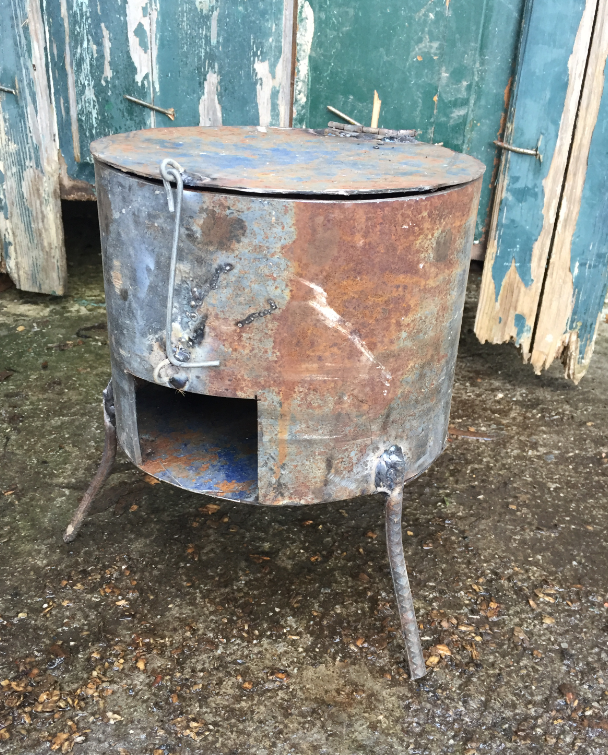
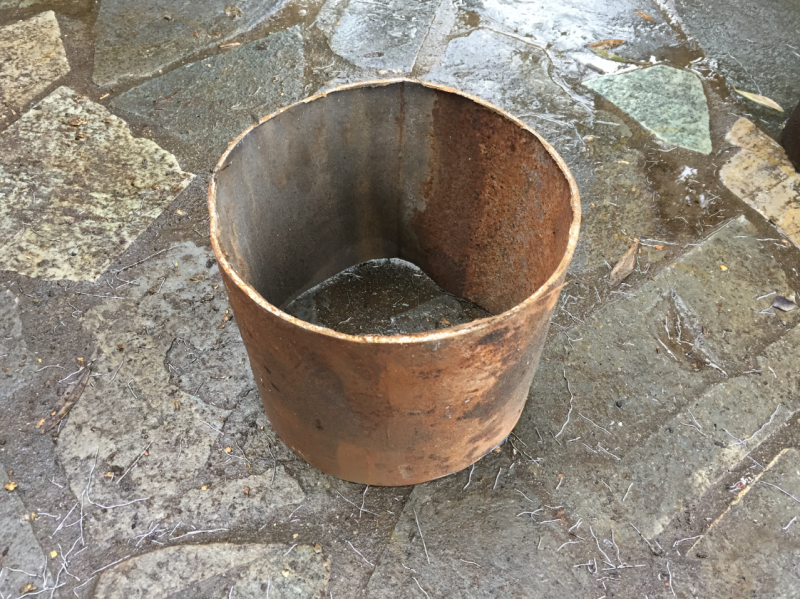
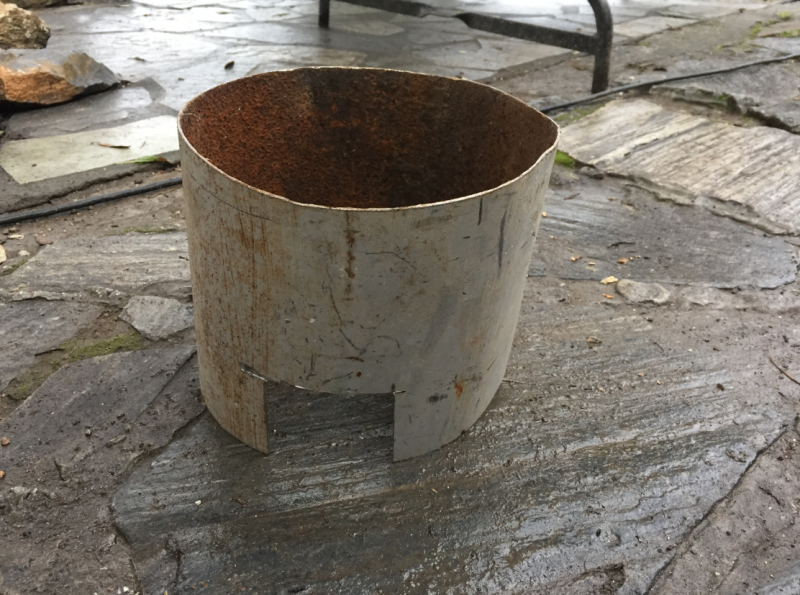
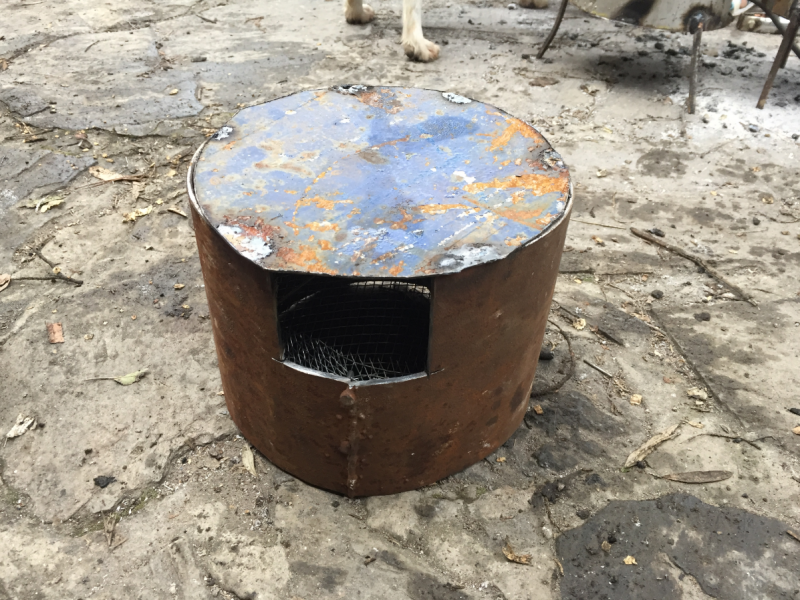
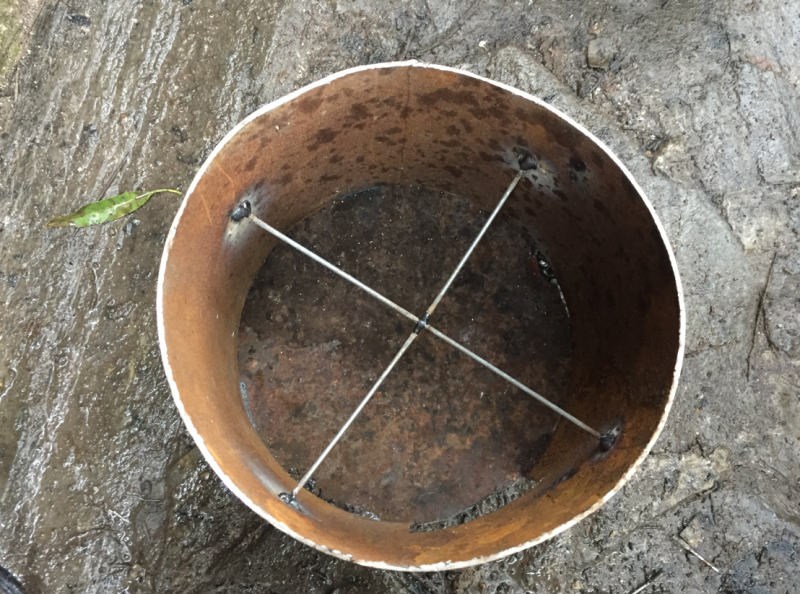
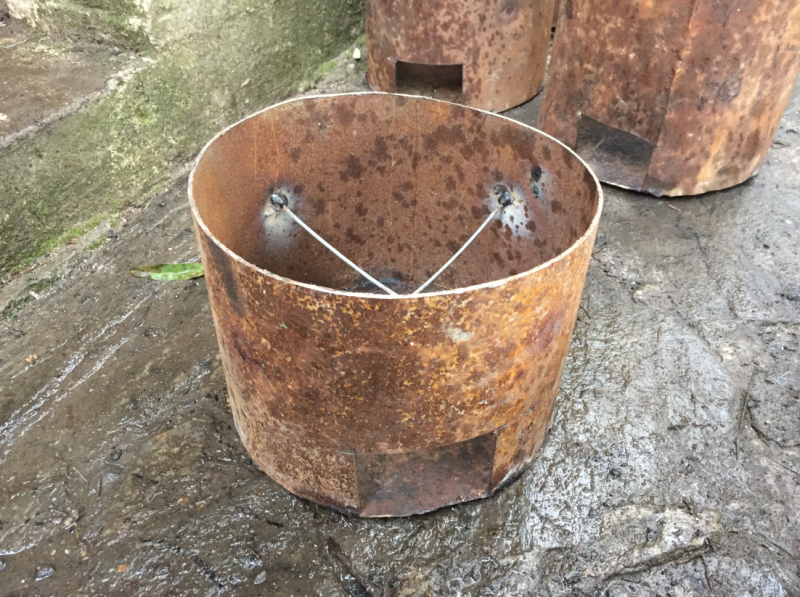
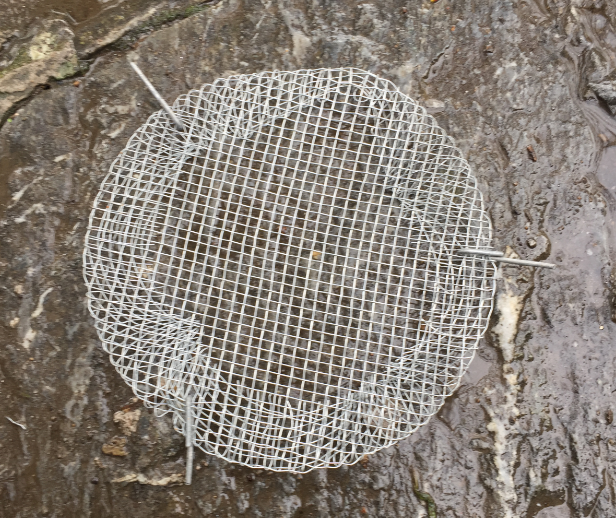
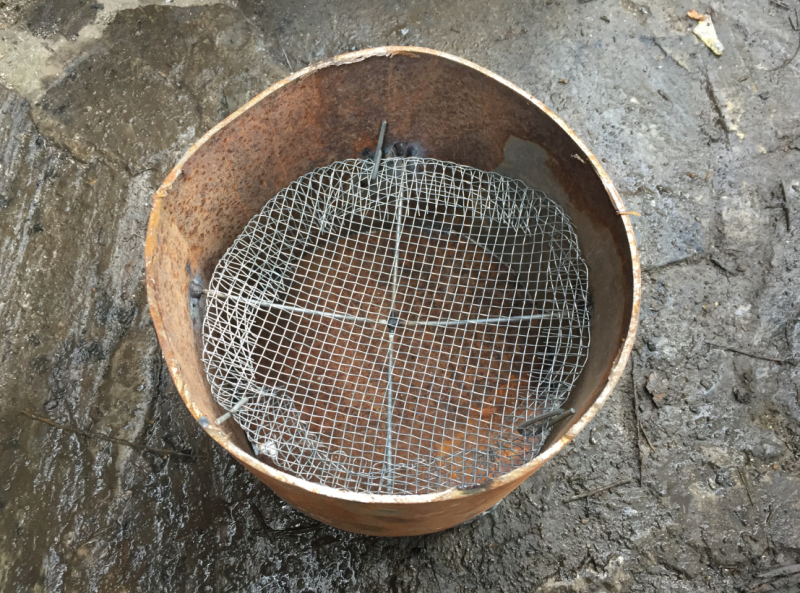
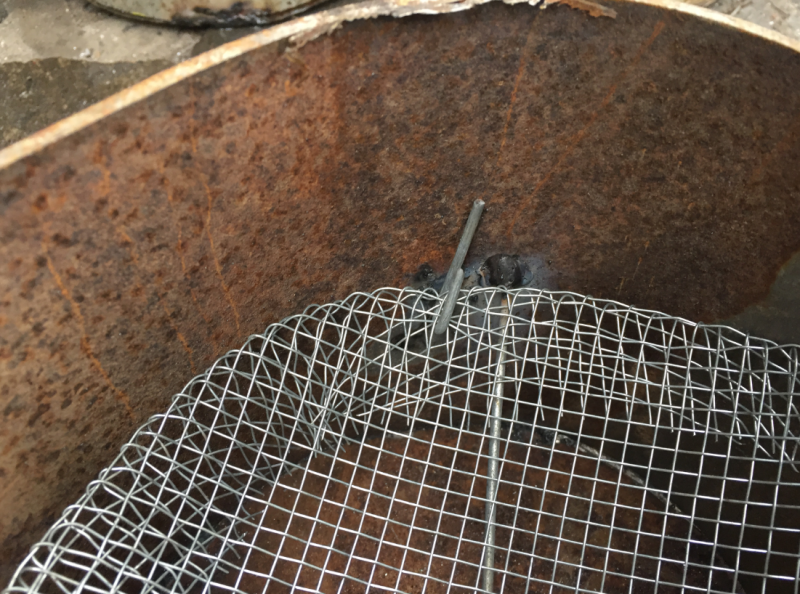
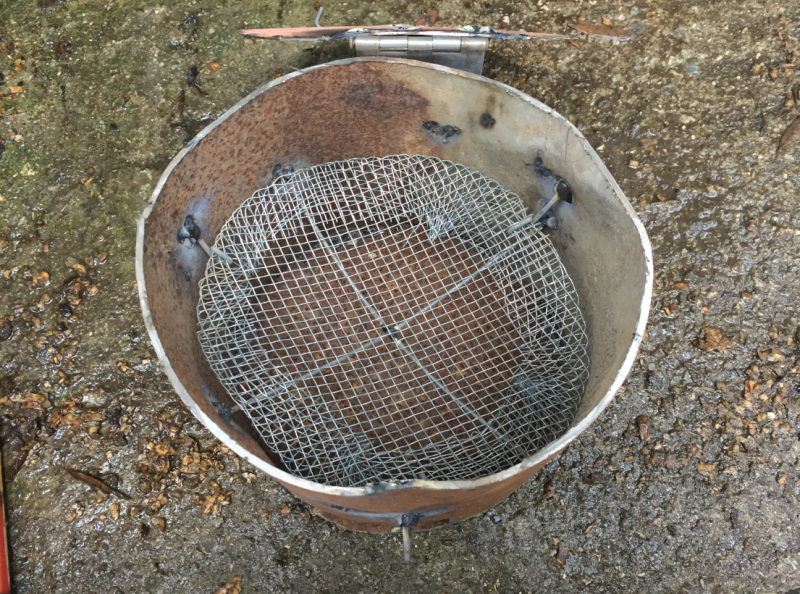
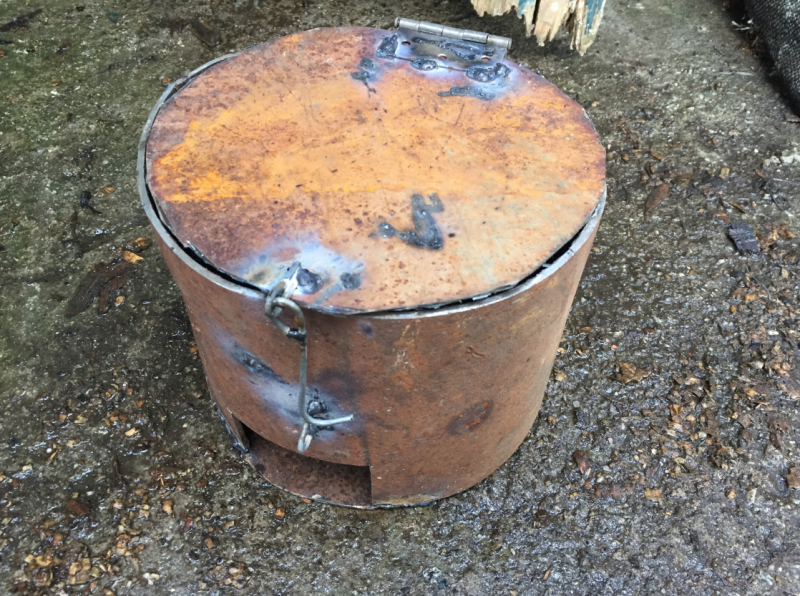
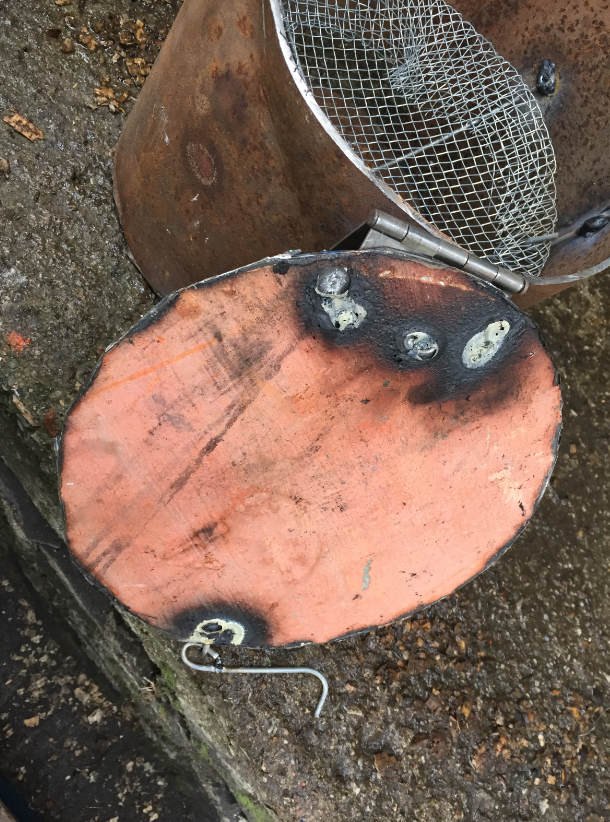
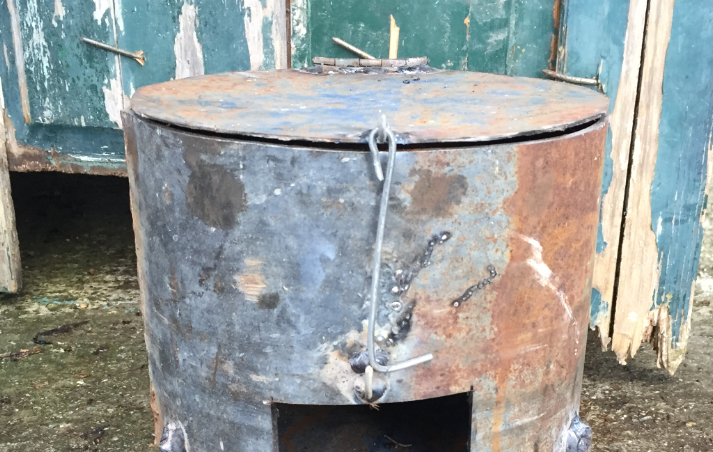
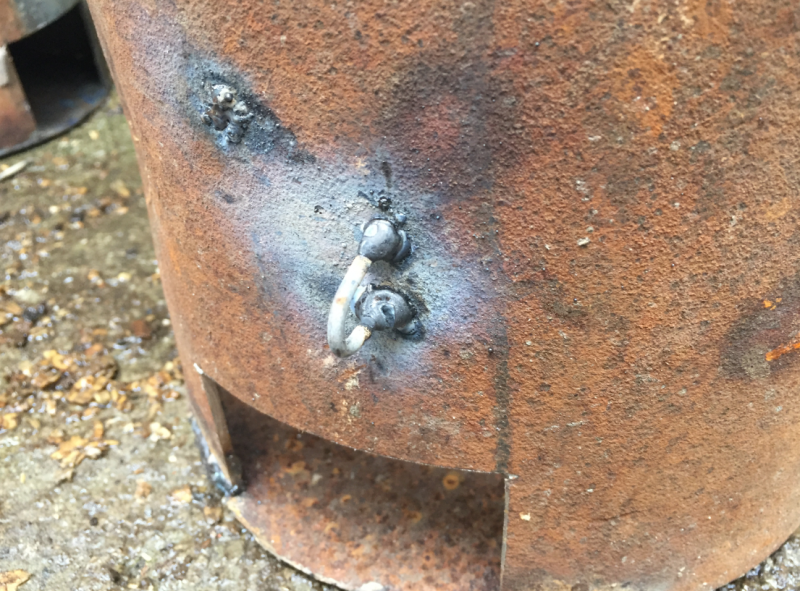
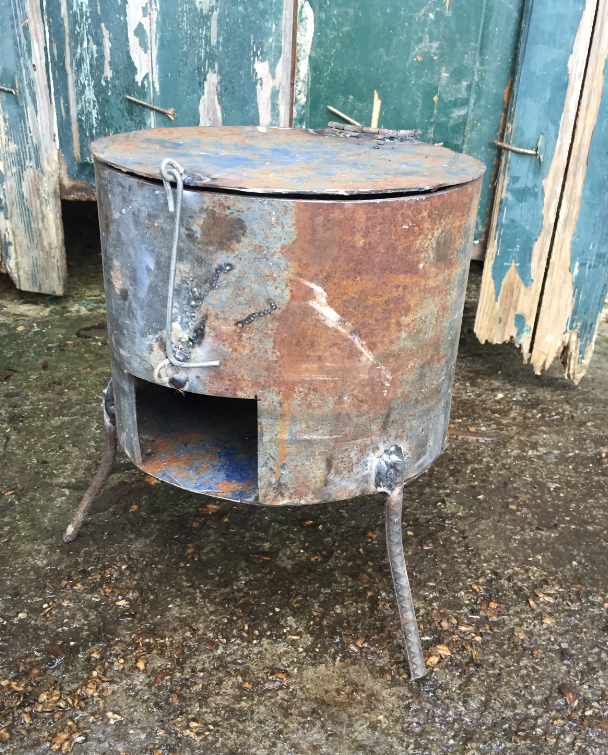
 Français
Français English
English Deutsch
Deutsch Español
Español Italiano
Italiano Português
Português